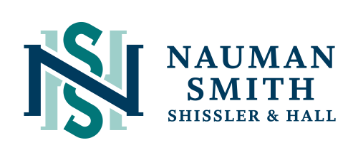New Drone Regulations: What Municipalities and You Need to Know
The increase in the sophistication and use of drones being operated by local governments and private individuals has raised issues regarding public safety and individual privacy. In October 2018, Governor Tom Wolf signed Act 78 (“Act”) limiting unmanned aircraft, more popularly known as drones, within Pennsylvania. The Act was directed to protect individuals’ privacy since the increased popularity of drones has decreased the amount of seclusion in homeowners’ backyards. To carry out its purpose, the Act has increased the criminal penalties for individuals using drones to spy on or surveil someone in a private place. The Act became effective on January 10, 2019, therefore, it is important for drone owners and municipalities to understand what they now can and cannot legally do.
The Act prohibits individuals from using drones to intentionally or knowingly conduct surveillance of another person in a private place or to put another person in reasonable fear of bodily harm. Violations may result in a summary offense conviction and up to a $300 fine. There are also enhanced penalties for using a drone to deliver, provide, transmit, or furnish contraband to a person in a prison or mental hospital. A conviction for such an offense constitutes a second-degree felony which can result in a prison sentence of up to 10 years and up to a $25,000 fine.
As with most laws, however, there are enumerated exceptions. Included in the Act are exceptions for law enforcement officials, government employees, first responders, and utility company employees who use drones in the course of their official duties. These individuals may continue using drones as they have before, provided such use falls within their prescribed duties. Municipalities are also allowed to continue operating drones within their boundaries for municipal purposes as they were before the Act.
The Act has provisions which expressly preempt any current ordinances, resolutions, rules, or other municipal enactments which regulate the ownership or operation of drones. Thus, municipalities can no longer regulate the ownership or operation of drones unless expressly authorized by statute. With this new limitation, it appears that an outright ban, as it exists in some state parks, city parks, and playgrounds, would be prohibited. Blanket prohibitions on drone use in areas such as national parks or public places would thus be replaced by the less stringent prohibition on surveillance in private places.
“Private places” are defined as any place “where a person has a reasonable expectation of privacy” under the Act. This could include an individual’s backyard and inside their home but arguably few other places. Thus, the Act broadens the availability of drone use across the state where municipalities may have previously prohibited it.
The Pennsylvania Department of Conservation and Natural Resources currently has a management policy in place for drones in its state parks to preserve the natural environment that visitors expect. The Department may opt to grant permits for drone use exclusively within designated flying sites at Beltzville, Benjamin Rush, Hillman, Lackawanna, Prompton, and Tuscarora State Parks, but drone use at other state parks or outside the designated flying areas is prohibited.
The Act may supersede the Department’s management policy. The Act does not specifically mention whether the Department’s regulations are to remain in effect, but the Department may fall within the scope of the Act. The Department was established by the General Assembly as a unit designated to manage the state parks, so if the Act does encompass parks within the Department’s jurisdiction, it could preempt the Department’s prohibition of drone use within state parks, and individuals would be free to fly them in those areas.
Federal regulations, however, do still apply. The FAA requires drone registration for unmanned aircraft weighing at least .55 pounds (including the weight of any cameras or recording equipment that may be attached). There are also limitations on where drones can be flown, including prohibitions on flying above certain altitudes, out of the operator’s line of sight, over groups or stadiums of people, and over or near emergency response efforts, among others.
The question remains as to how and where the Act will be enforced. With relatively low monetary penalties for mild infractions, the public harm caused by a drone’s illegal presence may not warrant the effort and resources needed to track down minor violators. It seems that the Act’s main thrust is to punish those individuals using drones to transport contraband or harming or invading the privacy of others. These individuals are arguably in the minority of drone users. For everyone else, the Act opens up the space where drones may fly and adopts a policy that as long as they stay out of private areas, “the sky’s the limit.”
This article was written with contribution from Sarah Rothermel, 3rd year law student at Widener Law Commonwealth.
